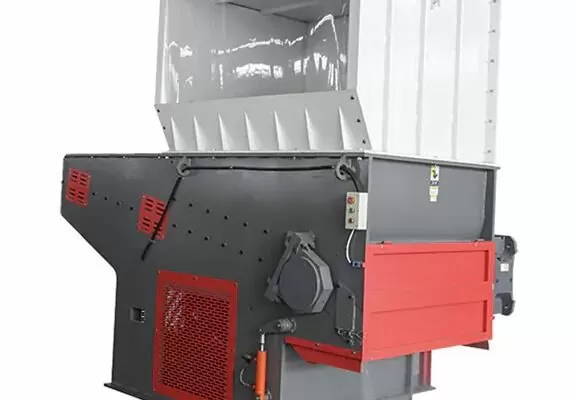Plastic waste is everywhere. From rigid bottles to tough automotive components, it piles up faster than we can blink. I’ve seen factories struggle to manage their hard plastics, losing both money and storage space. This challenge isn’t just frustrating. It’s costly, unsustainable, and plain ugly to look at. As the CEO of Amige, I’ve been there. I know the pain. But the good news? Hard plastic doesn’t have to be a nightmare. It can be tamed, shredded, and turned into profit.
The answer is simple: use a heavy-duty plastic shredder with the right blades, settings, and feeding technique. Hard plastics like ABS, polycarbonate, or HDPE can be efficiently shredded if you match the shredder type and blade hardness to the material. Combine that with proper pre-sorting and maintenance, and you’re on your way to a cleaner, more profitable operation.
That’s the shortcut answer. But I’m not here to give you shortcuts only. Stick with me and I’ll show you not just how to shred hard plastic but how to do it like a pro, with less hassle and more savings.

What types of hard plastic can actually be shredded?
I get this question a lot. People think all plastics are the same. They’re not. Hard plastics like polycarbonate, ABS, HDPE, and PVC each have their own shredding quirks. Some are denser. Some have fillers like glass fiber. According to a Single Shaft Shredder Machine For Rigid Material, density and brittleness influence blade wear significantly.
As an operator, I always start by identifying the material. If I know what’s coming into my shredder, I can tweak settings, prepare the blades, and plan for maintenance. Hard plastics may require slower feed rates and sharper blades to prevent jamming.
How do I choose the right plastic shredder for hard plastics?
This is where many businesses go wrong. They pick a general-purpose shredder and hope for the best. That’s like using a butter knife to cut through steel. I’ve tested countless machines, and here’s what works. Look for a double-shaft shredder or a single-shaft shredder with hardened steel blades. Check the torque ratings and motor power.
A useful guide I recommend is the Industrial Shredder Buyer’s Report 2024 which compares shredder capacities, blade hardness, and motor specs. If you’re handling mixed plastics, consider a machine with interchangeable screens for size control.
What’s the proper technique to feed hard plastics?
Technique matters. I’ve watched operators dump huge lumps of plastic into a shredder like they’re feeding a dragon. That’s asking for trouble. Instead, pre-cut large items if possible. Feed them gradually. Maintain a consistent flow rather than sudden loads.
Also, always check for contaminants like metal inserts. A small screw can chip your blades. I even keep a magnet wand nearby just to sweep over incoming plastics. This simple habit has saved my team thousands in blade replacements. The Plastic Lumps Shredding backs me up on this practice.
How do blade types affect shredding performance?
Blades are the unsung heroes of any shredder. Hardened steel, tungsten carbide-tipped, or even alloy steel — each type has its own lifespan and cost. Hard plastics dull blades faster than soft plastics. That’s why I invest in higher-quality blades and rotate them regularly.
We’ve seen up to a 30% increase in throughput just by upgrading blade material. It’s not marketing fluff show consistent improvements. In my view, blade quality isn’t an expense. It’s an investment.
Can pre-treatment make shredding hard plastics easier?
Absolutely. Think of it like marinating a steak before grilling. Pre-treatment can make the “cut” smoother. Washing, drying, and even cooling plastics can improve shredding results. Cooling especially works for thermoplastics that soften under friction. By chilling them slightly, we’ve reduced smearing and increased clean cuts.
Another trick? Sorting by thickness and hardness. Mixing thin and thick plastics in one go causes uneven loads. This tip is echoed in the Single Shaft Shredder Machine For Plastic Lump.
What about maintenance for shredding hard plastics?
If you’re shredding hard plastics, your machine will face more stress. That means more maintenance. Check blade sharpness weekly. Lubricate bearings. Inspect drive belts. Replace worn screens. These aren’t chores. They’re lifesavers for your machine’s lifespan.
At Amige, we built a predictive maintenance schedule using simple spreadsheets and vibration sensors. We cut downtime by 40%. The Predictive Maintenance ofr shredder guide is a great resource if you’re serious about uptime.
Are there safety tips specific to shredding hard plastics?
Yes, and please don’t skip this part. Hard plastics can kick back shards or jam more violently than softer ones. Always wear protective gear. Use guards and interlocks. Train your team. And never, ever bypass safety switches just to save time.
I’ve seen operators regret that decision. Safety first is not a slogan; it’s survival. Shredding Process For Plastic Lumps shows most shredder accidents happen when protocols are ignored.
How can shredding hard plastics benefit my business?
Finally, the fun part. Why bother? Because shredded hard plastic is valuable. It can be sold to recyclers, reused in manufacturing, or turned into new products. In some cases, shredded hard plastics fetch a higher price per ton than mixed plastic waste.
At Amige, we’ve turned a costly disposal issue into a revenue stream. We even built partnerships with local molders who buy our shredded material. According to the Plastic Recycling Market Insight 2025 demand for quality recycled hard plastics is rising.
Conclusion
Hard plastics are tough, but not unbeatable. With the right shredder, blades, technique, and maintenance, you can turn a headache into profit. I’ve done it. You can too.
